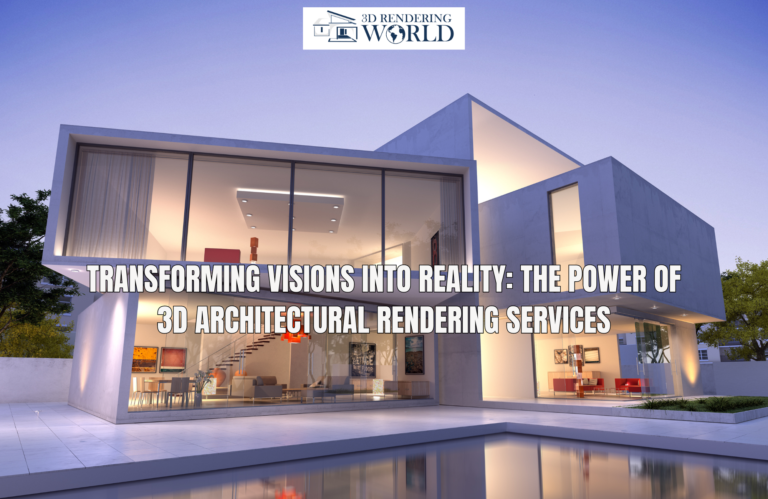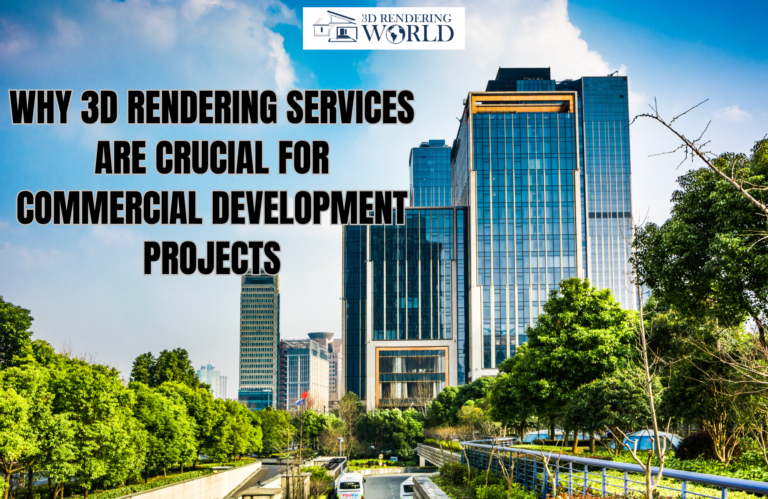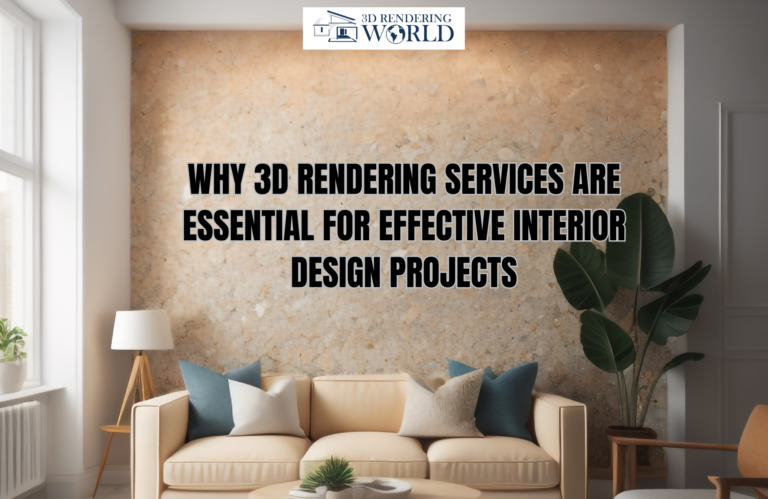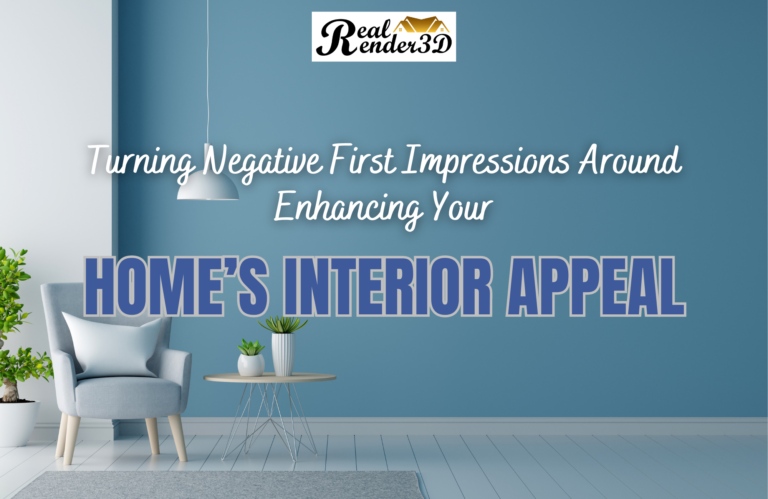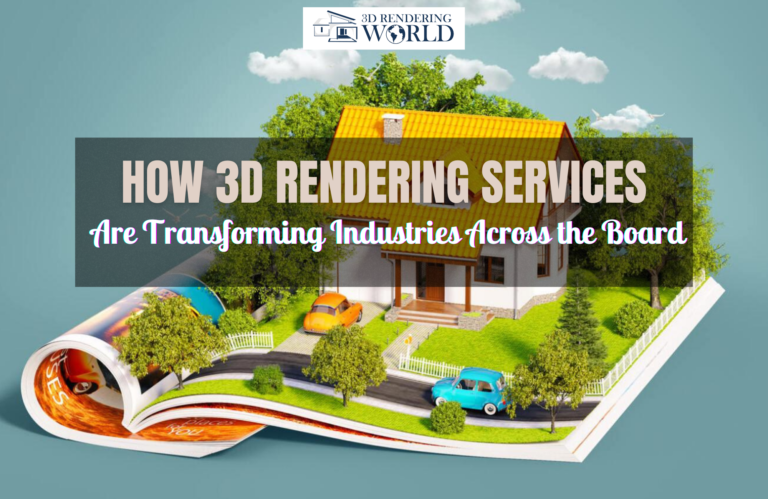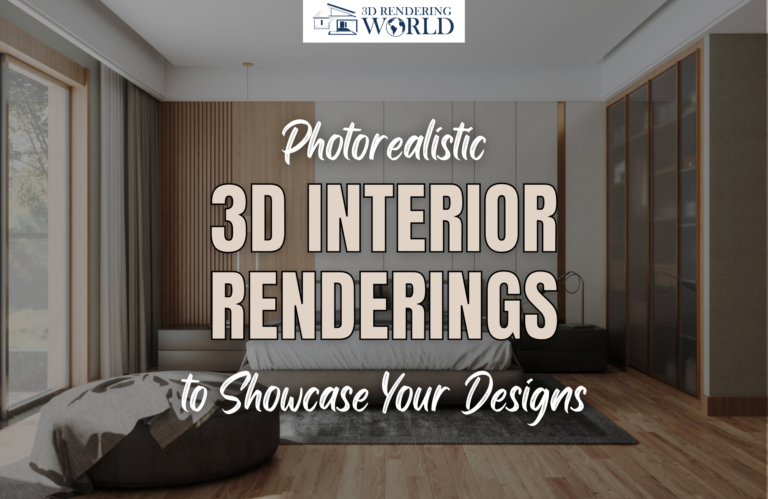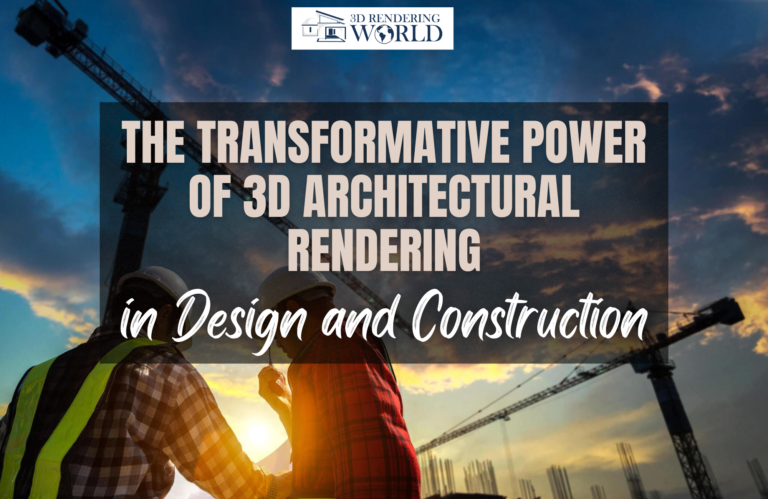Introduction
If you are looking to market a property development, showcase an architectural design, or visualize an interior space, utilizing 3D rendering services can bring your vision to life. With realistic materials, lighting, and perspectives, 3D renders enhance visual impact and help viewers connect with the space. However, with so many 3D rendering firms to choose from, finding the right one for your needs requires careful research. This guide will explore top considerations when selecting 3D rendering services and provide tips for choosing a provider who can meet your unique project requirements.
Understand Different Types of 3D Rendering

The first step is understanding the various types of 3D rendering services available. Some of the most common include:
- 3D Interior Rendering: Detailed visualization of interior spaces like homes, offices, restaurants, retail stores, etc. Materials, lighting, furniture, and styling are rendered in realistic detail.
- 3D Exterior Rendering: Highly realistic exterior visualizations of buildings, estates, developments, landscape architecture, etc. Special attention is given to context, landscaping, lighting, and surrounding environments.
- Property Marketing Renders: 3D visual content specifically tailored for real estate marketing materials like brochures, websites, signage, sales galleries, etc. Focus is on showcasing the property in the best light.
- 3D Architectural Visualization: Renders that accurately communicate architectural intent for spaces that may or may not be built yet. Great for concept presentations, design work, pitches, etc.
Consider the Level of Realism Needed

The level of realism, detail, and photographic quality required for the 3D renders should inform the service provider you choose. Some firms specialize in quick draft renders while others can produce fully immersive, photorealistic scenes. Generally, interior renders require a higher level of detail than exterior renders. Marketing materials demand a high level of realism while conceptual architectural visualizations may require less detail. Evaluate render samples from prospective firms and look for those capable of meeting your realism needs.
Assess Experience and Specialization
Look at prospective firms’ portfolios and client lists to gauge experience and areas of specialization. You’ll want to find a provider with extensive experience specific to your type of project. Firms specializing in architecture visualizations may not be the best fit for marketing renders and vice versa. Reach out to past clients to gain insight into their experience. A proven track record with similar deliverables to yours is a good indicator of their ability to meet expectations.
Consider Turnaround Time

Depending on your project timeline, turnaround time can be a make-or-break factor. Some firms can turn around renders in 24 hours for a rush job while others require several weeks. Marketing needs tend to be more fast-paced while design conceptualization may have more flexible timelines. Be upfront about your schedule and look for a provider that can work within your required timeframe without sacrificing quality.
Evaluate Communication and Collaboration
Since 3D rendering is an intensive back-and-forth process, effective communication is key. Look for providers that assume a collaborative approach, invite your feedback, and provide ample review cycles. Renders often go through several iterations before a final product so selecting a firm that aligns with your communication style and expectations is vital. Ask about their typical process and workflow.
Assess Pricing Models

The pricing model varies widely so compare proposals in detail. Some firms charge hourly while others charge per render or project. Expect pricing to correlate somewhat with the level of realism and detail. Additional factors like rush delivery, licensing agreements, size of the firm, and overhead costs also impact price. Look for reasonable value aligned with your budget and required level of service.
Prioritize Visual Storytelling

At its core, 3D rendering provides engaging visual storytelling. Look for providers experienced in enhancing visual impact to create an emotional connection with the audience. Your 3D rendering partner should think strategically about composition, lighting, materials, and perspective while ensuring designs are showcased in the strongest light. Assess their creative approach and problem-solving skills.
Conclusion
Choosing the right 3D rendering services comes down to aligning with a provider that fits your specific project needs. By researching and evaluating firms across these key considerations, you can find the ideal visual storytelling partner to bring your vision to life. Expertly executed 3D-rendered images will maximize visual impact and effectively highlight the best features of your property, product, or design. With realistic detail and strategic visual communication, you can convey the experience of inhabiting your space and effectively connect with your target audience.
Frequently Asked Questions
Some major benefits of using 3D rendering services include bringing visions to life with realism, enhancing visual impact for marketing, efficiently communicating architectural designs, visualizing spaces that don't exist yet, and creating emotive connections with audiences. Quality 3D renders can maximize visual appeal and engagement.
3D rendering is commonly used for interior design visualization, architecture visualization, marketing materials for real estate and property development, product design prototyping, retail and restaurant spatial planning, landscape architecture concepts, and any application requiring realistic visualization of physical spaces.
Interior 3D rendering focuses on details like furnishings, lighting, materials, textures, and space planning. It is typically more realistic. Exterior rendering depicts façades, landscaping, surrounding context and environments. Realism is still important but materials and textures may be less detailed than interiors.
Look for projects similar to yours to gauge their experience. Evaluate the level of realism, composition, lighting, materials, and alignment with your style. High-quality portfolios showcase the firm's strengths in visual storytelling and their ability to highlight designs in the best possible way.
Look for alignment in project timelines, communication style, level of realism, pricing, and creative vision. You want a collaborative team with relevant experience that can bring your concept to life on time and on budget. Testing responsiveness and reviewing past client feedback also helps determine fit.
Since 3D rendering requires significant back and forth, aligning expectations upfront around review cycles avoids delays and frustration. More complex projects typically require more review rounds before finalization so you want a provider that builds in ample review time.
Ask about experience, pricing models, timelines, project workflows, communication style, review cycles, creative approach, problem-solving strategy, and any technical or skill limitations. Get a sense of their experience with similar projects and ability to collaborate smoothly.


